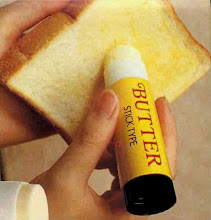 Above, home made Chaurice sausages.
T
Above, home made Chaurice sausages.
The idea of making sausage has been floating around in my head for several years. In September, Carolyn and I had a pizza at a restaurant called Mojo Tapas in St. Louis, MO that had a chorizo sausage that was excellent. I finally decided it was time that I made some sausage. Fortunately, I had Carolyn to help. I think this would be difficult, if not impossible to do alone.
Our project was hampered by the fact that we do not own a meat grinder with a sausage stuffing tube attachment. Nor do we have the meat grinding attachment for the KitchenAid stand mixer. Our only alternative was to have a butcher grind the meat for us. Besides, we needed to buy hog casings anyway, so we headed to Zier’s Prime Meats in Wilmette. We bought a nearly 5 pound chunk of pork shoulder. The butcher ground it to a consistency equal to typical ground beef used for hamburger.
The second problem, because we did not have the proper equipment, was how to stuff the ground meat into the hog casings. I had researched sausage-making on the internet and found recommendations to use a cake decoration piping bag. We happened to have several of these.
Finding recipes was easy (internet). I realized that I could divide the ground pork and mix it with different herbs and spices to make several different types of sausage. I decided on Italian Sausage, Spanish Chorizo, and a Creole sausage called Chaurice (which I had never had before). I didn’t follow the recipes exactly, but rather, determined the proportions of herbs and spices based on a number of recipes. Not exactly intuition . . . but guessing.
 Above, hog casing soaking in water. The casing comes on a strip of plastic to keep it organized.
Above, hog casing soaking in water. The casing comes on a strip of plastic to keep it organized.
The hog casing comes salted and has to be washed and soaked for 15 minutes in lukewarm (not hot) water. (Don’t over soak). Using the piping bag, with the largest tip we own, we made several Italian sausages. But it was difficult and the piping bag split. The tip burst out of the next bag and we were frustrated, but Carolyn had the inspiration to try using her cookie press. It worked like a charm. We had some leftovers from stuffing and friend them up, right there and then, to sample the sausage. Of the three sausages we made, I liked the Chorizo; Carolyn preferred the Chaurice. Unfortunately, the Italian was too salty (I reduced the salt by half in the recipe below). The sausage turned out far better than expected. Despite all the work and frustration, dare I say it . . . it was worth it. The sausage tasted better and had a better consistency than any sausage we’ve had in a restaurant or bought at the grocery store. Now I’m dreaming about bratwurst and Polish sausage! --
jb December 30, 2010
 Above: I labeled the spices with a water based pen to keep track which was which
Note: The hog casing broke several times. I think that’s normal. I think that the thickness of the casing is not perfectly consistent; it’s weak in places. Simply take the meat and put it back into the stuffer
.
Spanish Chorizo
Above: I labeled the spices with a water based pen to keep track which was which
Note: The hog casing broke several times. I think that’s normal. I think that the thickness of the casing is not perfectly consistent; it’s weak in places. Simply take the meat and put it back into the stuffer
.
Spanish Chorizo
I read that Spanish Chorizo, made in Spain, is air-cured for up to four months in special high-ceilinged rooms. Some chorizo is smoked; some is not. This recipe does not call for smoking, but because it includes smoked paprika, the sausage has a smoky flavor that is not overpowering. I didn’t have Aleppo pepper, so I took advice I found on the internet to substitute it with a 4 to 1 mixture of sweet Hungarian paprika and cayenne pepper.
Mix the first six ingredients together:
• Coarse salt: 2 teaspoons
• Garlic: 1/2 teaspoon
• Ground nutmeg: 3/4 teaspoon
• Brown sugar: 1 tablespoon
• Smoked paprika : 1 tablespoon
• Aleppo pepper substitute: 1 tablespoon Hungarian sweet paprika plus ¼ teaspoon cayenne pepper
• Ground pork: 2 lb.
I spread the ground pork on a large cutting board to an even thickness of about 3/8” and evenly distributed the spices. Then I turned half of the meat over on to the other half and used my fingers to massage the meat to thoroughly distribute the spices. Lastly, fill casings. Push the meat through the casing so you have about 2 inches of casing to tie off the end. Next, cut the casing at the other end, several inches past the meat, so you have another loose end with which to tie. Squeeze the meat toward the first tied end before tying the other end.
 Above: Ground pork spread just before applying the seasonings.
Chaurice (Creole Pork Sausage)
Above: Ground pork spread just before applying the seasonings.
Chaurice (Creole Pork Sausage)
• Ground pork: 2 lb.
• Salt: 2 teaspoons
• Ground cayenne: 1/8 teaspoon
• Powdered thyme: 1/2 teaspoon
• Chili powder: 2 teaspoons
• Hungarian sweet paprika: 1 tablespoon
• Ground black pepper: 3/4 teaspoon
• Onion powder: 1 teaspoon
• Garlic powder: 3/4 teaspoon
• Allspice: ¼ teaspoon
• Cumin: 1-1/2 teaspoons
Italian Sausage
• Ground pork: 2 lb.
• Salt: 2 teaspoon
• Black pepper (ground): 1-1/2 teaspoos
• Fennel seeds: 2 tablespoons
• Optional: Crush red pepper flakes: 1/2 teaspoon (or as you like)
12-30-12 Update: I adjusted the Italian Sausage recipe (above) with more salt and fennel than the initial recipe. Now it's perfect!
-jb




































